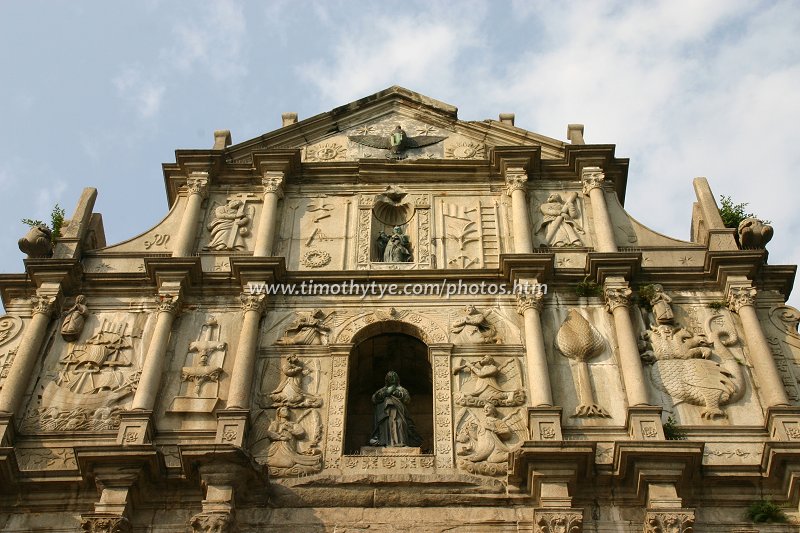 Ruins of St Paul, Macau (9 November, 2007)
Ruins of St Paul, Macau (9 November, 2007) The Ruins of St Paul's or Ruinas de São Paulo is the most famous icon of Macau. It is located at Largo da Companhia de Jesus. All that is left of the imposing 16th century cathedral is its front façade. The Ruins of St Paul's is not the ruins of a St Paul's Church - there never was a St Paul's Church in Macau - but rather the ruins of the Mother of God Church (Church of Mater Dei). Next to the Mother of God Church is the University College of St Paul. For some unknown reason, the name "St Paul" came to be attached to the church facade which is actually a "next door neighbor". Although it is inaccurate to call it "Ruins of St Paul's", the name has stuck and for most people, that is how they know it to be.
The Ruins of St Paul's or Ruinas de São Paulo is the most famous icon of Macau. It is located at Largo da Companhia de Jesus. All that is left of the imposing 16th century cathedral is its front façade. The Ruins of St Paul's is not the ruins of a St Paul's Church - there never was a St Paul's Church in Macau - but rather the ruins of the Mother of God Church (Church of Mater Dei). Next to the Mother of God Church is the University College of St Paul. For some unknown reason, the name "St Paul" came to be attached to the church facade which is actually a "next door neighbor". Although it is inaccurate to call it "Ruins of St Paul's", the name has stuck and for most people, that is how they know it to be.The Mother of God Church was built between 1582 and 1602 by the Jesuits. At the time it was completed, it was the largest Catholic church in Asia. It is said that royalty from Europe vied with one another to bestow the best gift to this cathedral. However, as Macau is overtaken by Hong Kong in importance, so too was the glory of the cathedral eclipsed. The final nail to its coffin came on 1835, when a typhoon cause a fire to break out and destroy the whole building, safe for its façade.
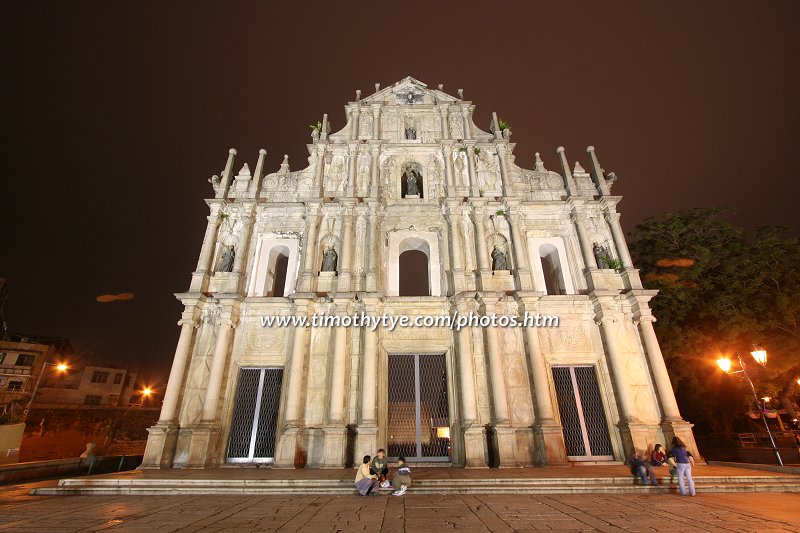 All quiet at the Ruins of St Paul's at night (9 November 2007)
All quiet at the Ruins of St Paul's at night (9 November 2007)
The façade was the work of local craftsmen and Japanese Catholics living in exile, under the direction of Italian Jesuit Carlo Spinola. The work was done between 1620 and 1627. It measures 23 meters from side to side and has a height of 25.5 meters. The facade narrows at the top into a triangular pediment. The entire facade is embellished with sculptured mouldings which include Catholic saints, Chinese lions, nautical symbols, a Portuguese vessel, Japanese chrysanthemum, and so on. This eclectic mixture of ornamentation reflects the work of its local and Japanese craftsmen.
Conservationists from the Instituto Cultural de Macau embarked on a study of the ruins between 1990 and 1995. Excavations revealed the foundation and crypt, and allowed the scientists to understand the layout of the building. To prevent the façade from falling over, a conservation program was put in place where the façade was buttressed with concrete and steel.
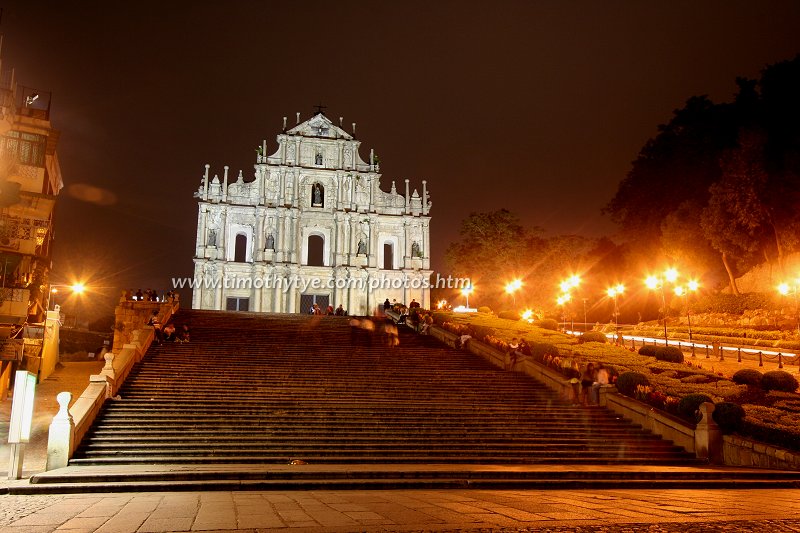 Grand staircase to the Ruins of St Paul's (9 November 2007)
Grand staircase to the Ruins of St Paul's (9 November 2007)
Today tourists can climb up through a steel stairway to the rear of the structure. It is customary to throw coins from the top window for good luck.
The Cathedral of St Paul is one of the sights within the Historic Centre of Macau and is inscribed by Unesco as a World Heritage Site.
Getting there
The Ruins of St Paul's is so central that you will probably pass it several times if you were to explore Macau on foot. I did just that, and ended up taking photographs of the ruins at different times of the day. The easiest way to reach the Ruins of St Paul's is to start from main square, Largo do Senado. Look for the signboards pointing to St Paul's and you will not miss it.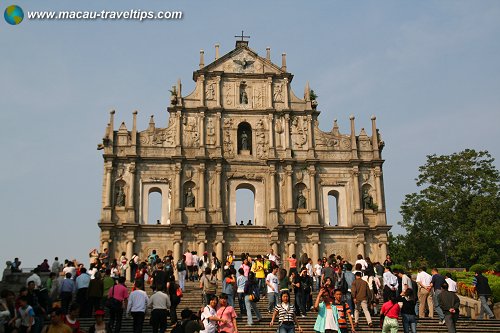
Tourists throng the Ruins of St Paul's (9 November 2007)

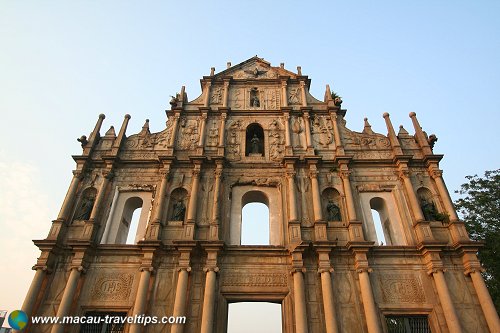 Ruins of St Paul's (9 November 2007)
Ruins of St Paul's (9 November 2007)
 Latest updates on Penang Travel Tips
Latest updates on Penang Travel Tips
 Map of Roads in Penang
Map of Roads in Penang
Looking for information on Penang? Use this Map of Roads in Penang to zoom in on information about Penang, brought to you road by road.
Copyright © 2003-2025 Timothy Tye. All Rights Reserved.

 Go Back
Go Back